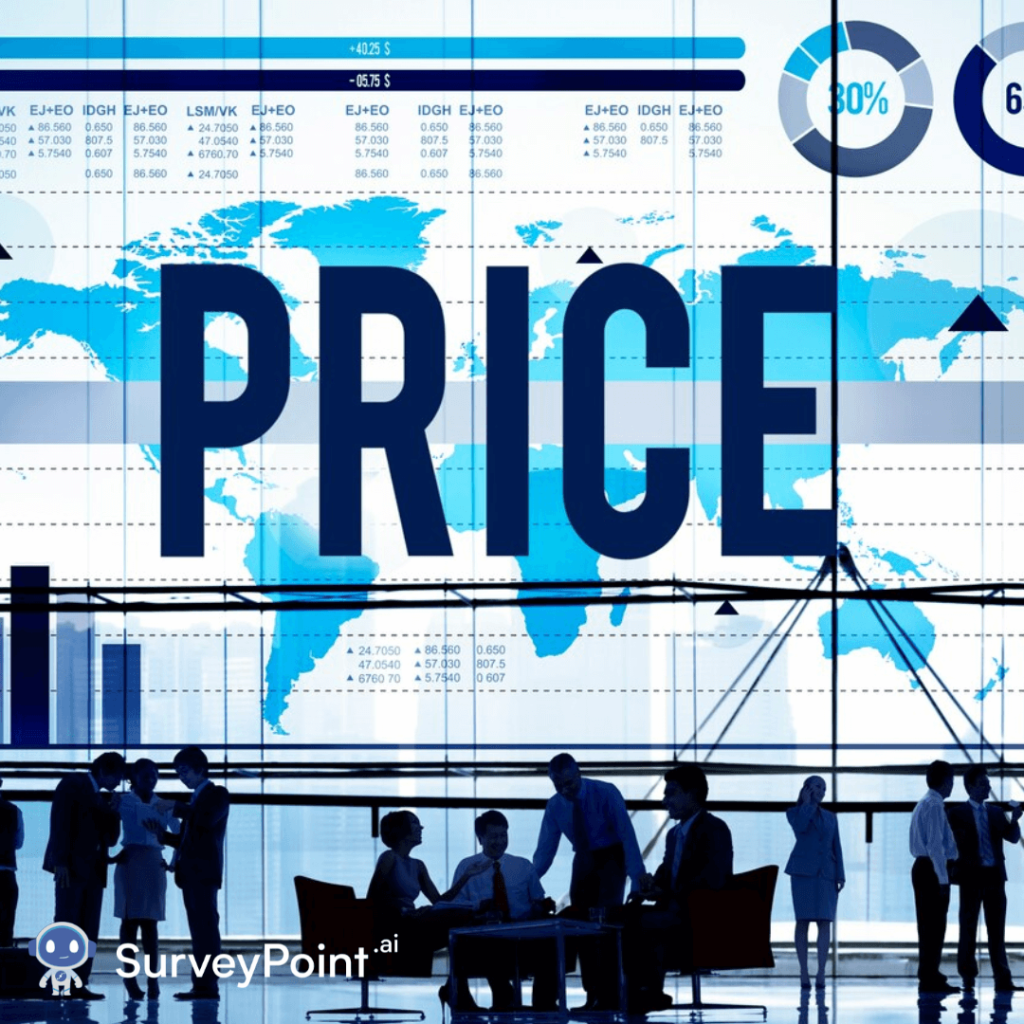
Pricing is more than just assigning a monetary value to a product or service; it’s a powerful tool that can shape a business’s profitability, market positioning, and customer perception. A well-thought-out pricing strategy can be the difference between a thriving business and one that struggles to survive.
In this blog, we’ll explore what pricing strategy is, why it’s important, and delve into the types of strategies businesses can adopt to achieve their goals.
What is a pricing strategy?
A pricing strategy refers to the method businesses use to determine the price of their products or services. It involves analyzing various factors, including production costs, competitor pricing, market demand, and the perceived value of the offering.
Far from being static, pricing strategies are dynamic and must adapt to changing market conditions, customer behavior, and the business’s growth stage.
Why is Pricing Strategy Important?
- Maximizes Revenue: Setting the right price ensures a business achieves the highest possible returns without alienating customers.
- Builds Market Position: Pricing reflects the brand image and value proposition. For example, premium pricing signals luxury, while competitive pricing conveys affordability.
- Encourages Customer Loyalty: Transparent and fair pricing builds trust with customers, fostering long-term relationships.
- Adapts to Competition: A strategic approach to pricing allows businesses to stay competitive in the market while protecting their margins.
- Supports Business Goals: Whether the objective is market penetration, profit maximization, or brand differentiation, pricing serves as a direct tool to achieve these outcomes.
Types of Pricing Strategies
1. Cost-Plus Pricing
This straightforward strategy involves adding a markup to the cost of production to set the selling price.
When to Use:
- In stable markets with predictable costs.
- For products with little competition or low demand fluctuations.
Example: A bakery calculates the cost of ingredients for a cake and adds a fixed profit margin to determine the selling price.
2. Value-Based Pricing
This approach bases the price on the perceived value to the customer rather than production costs.
When to Use:
- For premium or unique products.
- In industries where brand reputation influences purchasing decisions.
Example: Luxury brands like Rolex charge high prices based on their perceived exclusivity and craftsmanship.
3. Penetration Pricing
Here, businesses set low prices initially to attract customers and gain market share, with plans to increase prices later.
When to Use:
- For new products entering competitive markets.
- When the goal is rapid customer acquisition.
Example: Streaming services like Netflix often offer free trials or discounted initial plans.
4. Skimming Pricing
In this strategy, businesses set high initial prices to target early adopters and gradually lower prices over time.
When to Use:
- For innovative or technological products.
- When targeting customers willing to pay a premium for early access.
Example: New smartphones or gaming consoles are typically launched at a premium price.
5. Competitive Pricing
Prices are set based on what competitors charge for similar products.
When to Use:
- In markets with little product differentiation.
- To avoid price wars and maintain parity with competitors.
Example: Grocery stores often match or undercut competitors’ prices on everyday items.
6. Psychological Pricing
This strategy leverages consumer behavior by setting prices that “feel” lower, such as $9.99 instead of $10.
When to Use:
- To appeal to budget-conscious customers.
- In retail and e-commerce settings.
Example: Fast-fashion brands often use psychological pricing to encourage impulse purchases.
7. Dynamic Pricing
Also known as surge pricing, this approach adjusts prices in real-time based on demand and other external factors.
When to Use:
- In industries with fluctuating demand, like travel or events.
- For e-commerce platforms using advanced analytics.
Example: Airlines increase ticket prices during peak travel seasons.
8. Bundle Pricing
This involves selling multiple products together at a lower price than purchasing them separately.
When to Use:
- For complementary or related products.
- To increase the average order value.
Example: Fast-food chains offering meal combos.
9. Freemium Pricing
A basic product or service is offered for free, with charges applied for premium features or upgrades.
When to Use:
- For software, apps, or digital services.
- When building a user base is a priority.
Example: Spotify offers free basic streaming but charges for ad-free and premium features.
10. Geographic Pricing
Prices are adjusted based on the customer’s location to account for regional costs, taxes, and demand.
When to Use:
- For businesses operating in multiple regions.
- When regional market conditions vary significantly.
Example: Online retailers often charge higher shipping fees for remote locations.
How to Choose the Right Pricing Strategy
Selecting the ideal strategy depends on:
- Business Goals: Are you aiming to maximize profit, gain market share, or position your brand as a premium choice?
- Market Conditions: Consider demand, competition, and industry trends.
- Target Audience: Understand what your customers value most and their willingness to pay.
- Cost Structure: Ensure your pricing covers costs while aligning with strategic objectives.
Conclusion
Pricing is both an art and a science, requiring a deep understanding of your product, market, and customers. A well-crafted pricing strategy not only drives sales but also communicates your brand’s value and positioning.
By experimenting, adapting to market feedback, and balancing profitability with customer satisfaction, businesses can leverage pricing as a powerful tool for success.
Which pricing strategy aligns with your business goals? Share your thoughts and experiences in the comments below!




